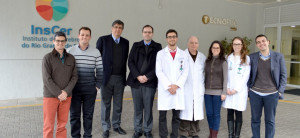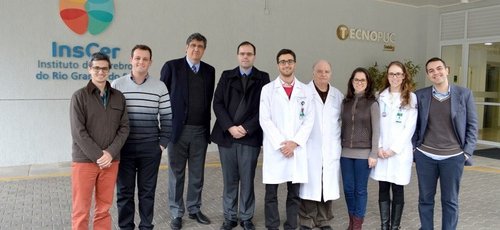UNIPEN - Neurovascular Research Unit - InsCer and Hospital São Lucas da PUCRS
Coordinators: Luiz Carlos Porcello Marrone, PhD and Ayrton Massaro, PhD
Members: Antônio Carlos Huf Marrone, PhD ; Viviane Maria Vedana ; William Alves Martins ; Rafael do Amaral Cristovam ; Gustavo Tomasi; Bernardo Chaves Portal ; Manuella Edler Zandoná ; Paula Caprara Gasperin .
The Neurovascular Research Unit (UNIPEN) is formed by neurologists with clinical experience and research in vascular neurology at InsCer and São Lucas Hospital at PUCRS and aims to develop clinical and experimental research and train researchers for the area of vascular neurology, in addition to training professionals to qualify care in the area. According to the researcher and neuroscientist Prof. Dr. Luiz Marrone, one of the unit's leaders, the union between the promotion of research and the training of neurologists will result in a triad of excellence in assistance, research and teaching in vascular neurology.
Unipen also seeks to consolidate the internationalization of the Brain Institute, developing partnerships with researchers from different countries. According to the teacher. Dr. Ayrton Massaro, also leader of the group, the integration of people with a high scientific level and the institute's facilities, with cutting edge technology, provide exclusivity to the program in the country. In addition, if the other existing research units are listed, such as those focused on Epilepsy, Alzheimer's and Multiple Sclerosis, the reference becomes Latin American.
The focus of the studies developed is on cerebrovascular diseases and the research takes place with patients previously selected or attending the Neurology Service of Hospital São Lucas da PUCRS. The translational characteristic is one of the differentials of studies carried out by Unipen, where members develop their lines of research from the laboratory bench to clinical care, making the participating researcher a leader in knowledge in their area of expertise.
The importance of unit formation occurs in a context where stroke is the main cause of mortality and morbidity (sequelae) in Latin America. Stroke is divided into two major groups: ischemic and hemorrhagic. In the first, the most common, there is a sudden interruption in cerebral blood flow, causing a cerebral infarction (ischemia) process. In the second, more severe, there is a rupture of the wall of a blood vessel (usually caused by arterial hypertension or rupture of cerebral vascular malformations), which causes a direct lesion on the brain parenchyma.



